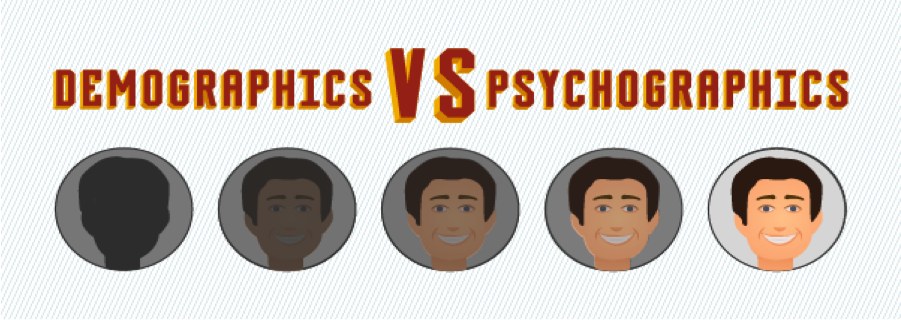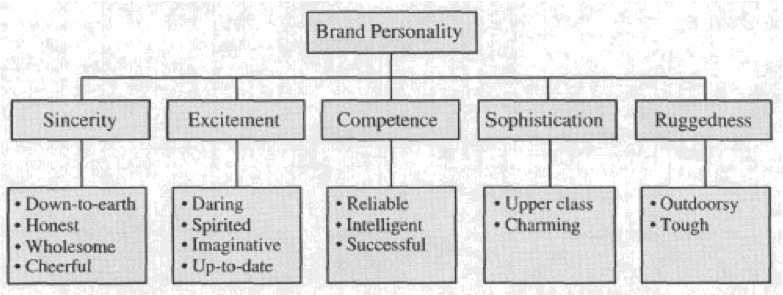Part 4: Understanding Psychographics in Social Media Marketing
Welcome to Boomtown IG’s final chapter in our Consumer Behavior blog posts. This week’s and our final topic of discussion is consumer psychographics and how these play a role in managing your company’s social media. We hope you’ve enjoyed our insights and that they’ve help you understand a little more about how consumers engage and interact with businesses through social media.
What are Psychographics?
In marketing there are essentially four ways to segment customers: Geographics, Demographics, Behaviorgraphics, and finally Psychographics. According to the Business Dictionary, psychographics is the “analysis of consumer lifestyles to create a detailed customer profile.” When combined with geographic and demographic characteristics, it develops a more ‘lifelike’ portrait of the targeted consumer segment. In essence, they are the personalities and lifestyles of your target consumers and where demographics tell us “who” buys, psychographics tell us “why” they buy. Consumers can share essentially the same demographics and still be very different. Psychographics give marketers a snap-shot of the things they value (Personality), the things they do in their spare time (Lifestyle), and how customers feel about themselves (Self-concept).
Personality
A consumer’s personality has major marketing implications. Personality defined is the sum of the physical, mental, emotional, and social characteristics of an individual. These characteristics are unique to the individual and are ultimately reflected in consumption choices. This also pertains to how a consumer acts over social media. There are three main personality theories to look at when trying to examine the personalities of your target market. Knowing your target market’s personality on social media can help you shape your own. Social media is the perfect place to really express your brand’s personality. Just like people, brands have personalities as well. Brand personalities impact brand equity and when utilized in your social media, will have a major influence in consumer engagement and participation.
*Keep in mind that because it’s a social network, consumers aren’t engaging with the products you’re selling, they’re engaging with personalities associated with those products.
Lifestyle
A consumer’s lifestyle is their pattern of behaviors and is represented by their activities, interests, and opinions. Understanding the lifestyles of your target market gives you insights into how they spend their time and money. This chart breaks down the dimensions of a consumer’s lifestyle.
| Activities | Interests | Opinions (about) | Demo-graphics |
| Work | Family | Themselves | Age |
| Hobbies | Home | Social Issues | Education |
| Social Events | Job | Politics | Income |
| Vacation | Community | Business | Occupation |
| Entertainment | Recreation | Economics | Family Size |
| Club Membership | Fashion | Education | Dwelling |
| Shopping | Media | Future | City Size |
| Sports | Achievements | Culture | Stage in Life Cycle |
Obviously a 15 year old girl will have a different lifestyle with different interests and activities than a middle aged man with a family and a fulltime job. Knowing your target market will give you an insight into how to cater to their lifestyle in your social media. Should it be more focused on entertainment and interactive aspects where people will spend a great deal of time, or should it be focused more on the “business” side of things, providing constructive information, and efficiency? These are questions you should be asking yourself when you want to form an SMM strategy that pertains to your consumers’ lifestyles.
Self-concept
A consumer’s self-concept is the thoughts and feelings about him or her self. This can be heavily influenced by consumption. From a marketing standpoint, it is important to know that all consumers make decisions to support their self-concept by either associating with products or services that are consistent with their actual-self or help reach their ideal-self. For consumers, social media is the perfect place to embody who they really are and show to the world who and what they associate with. Coincidentally, it is also a haven for their ideal-selves. Actively joining groups and following people and things they want to associate with is an ideal way for consumers to circumvent their actual-self and display who they actually want to be. By appealing to a consumer’s self-concept, mainly the ideal-self, has the potential to expand your market.
Takeaway
Using psychographics to predict consumer behavior is a great way to enhance your company’s social media outreach. By catering to their personalities, lifestyles, and self-concepts, you have the opportunity to truly focus and understand how your consumers tick. In the end, if you do it right, playing to your consumer’s psychographics will not only help with increased engagement and interaction, but also most importantly, retention.




